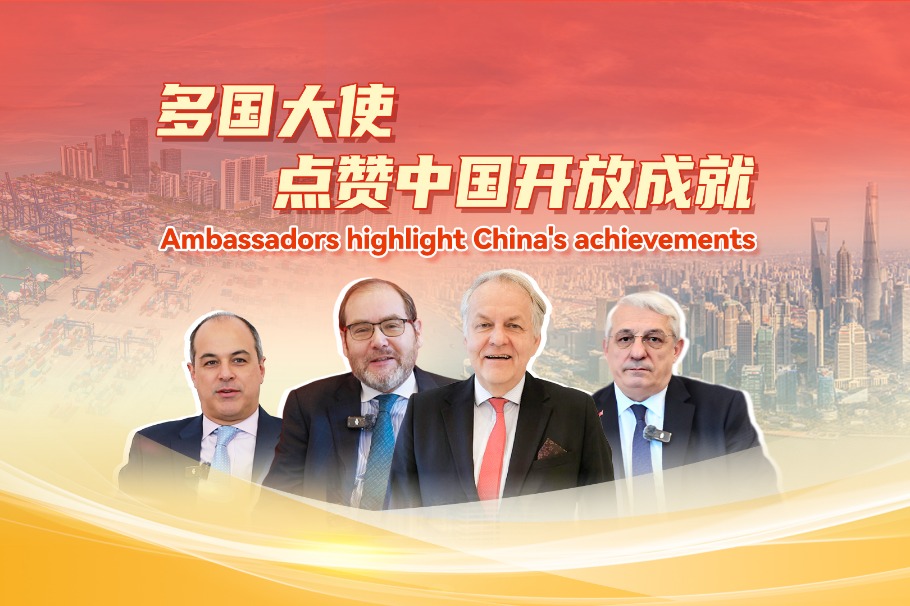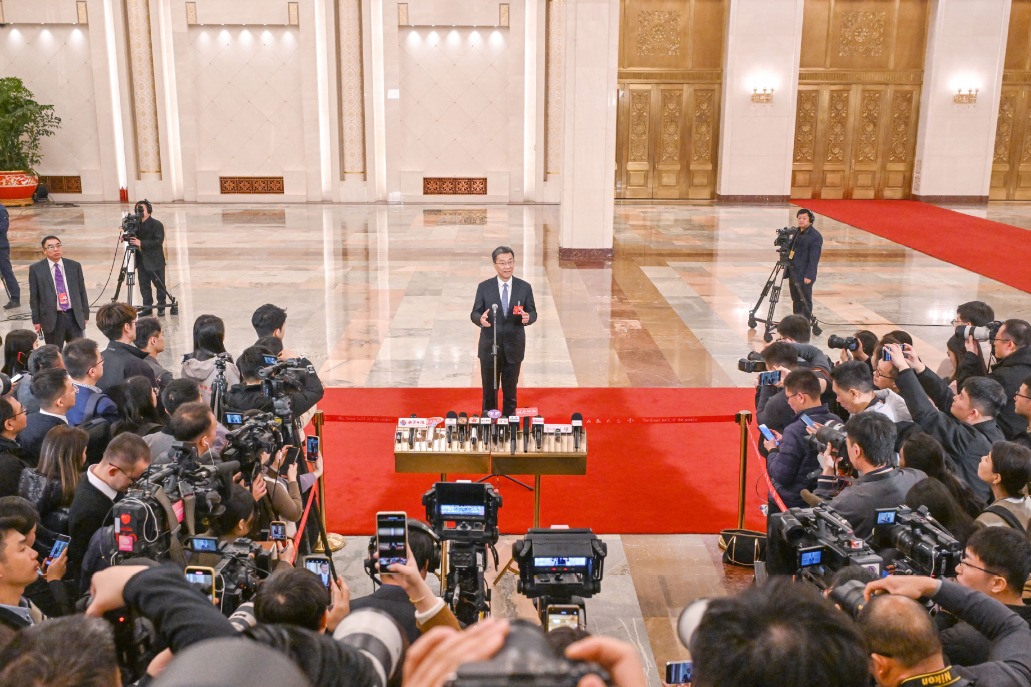Company Sanofi reaffirms its positive outlook and dedication to China

Beneficial cooperation and communication between China and France on healthcare set a prime example for international collaboration, said Paul Hudson, CEO of Sanofi.
The French pharmaceutical company has grown in China for more than four decades. Today, China is Sanofi's second-largest market globally. The company reported a revenue of 3.12 billion euros ($3.4 billion) from China in 2022, up 6.2 percent year-on-year.
The agreement that China and France have reached on the Belt and Road Initiative provided a strong basis and enlarged the scope for future strategic cooperation between the two countries.
Sanofi has continued to increase investment, strengthen cooperation and promote in-depth exchanges between France and China in the healthcare industry in recent years.
It signed a new memorandum of understanding with the Pingshan district government in Shenzhen, South China's Guangdong province, in April, on continuing to accelerate access to innovative vaccine products and promote the high-quality development of Pingshan's biopharmaceutical industry.
Sanofi partnered with the Shenzhen government to sign a strategic cooperation agreement on vaccine innovation, pioneering China's and France's cooperation on the prevention of diseases.
The year 2024 will mark the 60th anniversary of the establishment of China-France diplomatic relations, and will feature the Summer Olympics that are to be held in France.
Sanofi hopes to take the opportunity to actively promote the stable and healthy development of Sino-French relations and inspire itself to do more and ignite its full potential.
Earlier in April Hudson paid a visit to China, his first of this year, and said he was thrilled to be here in person. "Here I see our organization's agile working model being well implemented," he said.
The model has been adapted for digital transformation, and the "agile" thinking has inspired a more open, efficient and collaborative workplace for all employees, according to Hudson.
The entire team in Sanofi's China headquarters in Shanghai works in a shared open space and people can also apply to work remotely two days a week to balance work and family.
This is something that Hudson has experienced in the office among the unique activities he participated in during the visit. It is worth noting that Hudson, together with the executive committee members of Sanofi, embarked on a second trip to China in early June.
"Coming back to China after three years, and for the second time this year, I've witnessed the great changes and the further dynamism in the Chinese market," Hudson said, adding that the most significant changes over the past few years have arisen from the opening-up environment. These favorable evolutions have solidified Sanofi's confidence and commitment to China. "I look forward to returning in the fall for the China International Import Expo, also known as CIIE," Hudson added.
That in turn supports Sanofi's long-term development in the country. Its innovative products may enter the Chinese market faster and local investment will be more convenient, continuously reshaping the position as a "local multinational" company.
Sanofi's vaccine plant, worth 1.2 billion yuan ($174.3 million), in the Guangdong-Hong Kong-Macao Greater Bay Area, has achieved localized production of influenza vaccines.
Zhang Dengfeng, Party secretary of Binjiang district in Hangzhou, visited the French Chinese Chamber of Commerce and Fortune 500 companies including Sanofi in March.
This district reached a new round of strategic cooperation with Sanofi. The company's plant there is expected to receive an investment of 220 million yuan in the future to increase capacity of its drug production line.
In June, Sanofi launched a medicine localization project at its Beijing manufacturing site with investment estimated at 500 million yuan, to better meet the treatment needs of Chinese patients.
Sanofi has planned to introduce more than 25 innovative products into China between 2020-25, covering immunological/inflammatory diseases, rare diseases and rare blood disorders, oncology, vaccines, cardiovascular disease, diabetes and more.
Sanofi's first global research institute was launched in China in 2021, focusing on cutting-edge biological research in major diseases. The company has made China a crucial country for globally synchronized research and development since 2019 and, by 2021, China had participated in over 80 percent of Sanofi's global R&D projects.
China's 14th Five-Year Plan (2021-25) for the development of the bio-economy includes piloting scientific and technological innovation and reform in fields of biomedicine, bio-agriculture, bio-energy and bio-environmental protection.
It also requires gathering globally innovative biological resources by higher-level opening-up and more powerful reform measures, which may create a broader space for Sanofi to deepen its localization strategy, according to the company.
Biomedicine is currently one of the three leading industries that Shanghai is focusing on, together with integrated circuit and artificial intelligence. The city calls on companies to invest more in the field of innovative drugs.
Responding to the trend, Sanofi is increasing its investment in biopharmaceuticals by deepening partnerships with local companies.
It has invested in Suzhou-based Innovent Biologics for strategic cooperation on accelerating the development and market access of innovative oncology drug products.
Sanofi launched an exclusive licensing deal with Shanghai-based Rona Therapeutics, which is dedicated to the R&D of nucleic acid medicine, for a small nucleic acid pipeline and technology platform.
Strengthening the health development planning of county areas is a crucial part of the Healthy China 2030 initiative and the 14th Five-Year Plan, which echoes back on one of Sanofi's strategic priorities in China — primary care, according to the company.
The company has paid attention to county-level healthcare in China, and always focused on the massive demand for chronic disease management at the grassroots level in the country.
Devoting itself to healthcare training in counties to enhance the capacity of medical personnel and ultimately benefit the majority of patients, Sanofi will continue to work on county-level healthcare, helping to establish a new system of quality and efficient primary healthcare services.
The Government Work Report, released this March, demonstrates China's opening-up persistence and commitment to "promote the steady development of foreign trade and investment", said Hudson.
China renewed the Catalogue of Industries Encouraged for Foreign Investment in 2022, which came into force on Jan 1, 2023. There are 16 items in the pharmaceutical industry, two more than those in the version released in 2020.
Sanofi runs three production sites, four R&D facilities and one digital innovation center in China. All of the favorable conditions in the country provide it with fertile soil to continuously cultivate and develop, according to the company.
"Building on Sanofi's 40-year history in China, we are focused on continuously strengthening our contributions across key areas like the treatment of chronic diseases and next-generation medicines and vaccines," said Hudson.


Today's Top News
- Tariffs causing US pain not 'little disturbance
- Countermeasures taken to US' unilateral tariff hikes
- High-tech manufacturing in spotlight
- Top political advisory body pledges support for green progress
- Envoys express confidence in China's growth
- HK and Macao eye boost from nation's growth






























